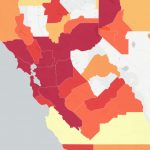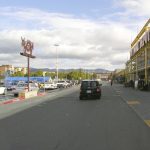Corte Madera, population 9,300, kicked off a fierce debate in Marin over housing mandates earlier this year when the town council voted to become the first member to secede from the Association of Bay Area Governments.
At the time, the nine-county planning agency (until then, made up of representatives of every Bay Area city) was launching a big regional housing-growth initiative called Plan Bay Area.
Now, several local groups across the Bay Area are questioning the value of the regional plan, saying it will sacrifice local control. They also say the proposed developments for Marin — some of which are built on the sides of freeways — won’t create either walkable communities or transit hubs, which are among the plan’s intended “smart growth” goals.
While there is hardly a mass revolt, local resistance is still a worry for regional planners. Pinole, in the East Bay, made a similar decision to leave the association in July 2011, but later reversed course and rejoined the agency.
Corte Madera has no plans to reverse its decision, which would not go into effect until July 2013. While critics argue that the move is largely symbolic, a groundswell of community support in the county has coalesced behind the decision.
“This is really about whether a small town should be forced to turn into a big city,” said Mayor Bob Ravasio. “We thought about this. We’re not crazy.”
At a series of talks and meetings in March and April, the Marin Communities Coalition for Local Control brought together community groups in a countywide discussion about regional planning mandates. The meetings drew county supervisor and congressional candidate Susan Adams, supervisor candidates David Weinsoff and Eva Long, and state Assembly candidate Marc Levine.
Some activists hope to create an independent council of Marin governments that would operate separately from the Association of Bay Area Governments.
“We need to stand up and resist political pressures and dominance of unelected officials that have no stake in the Marin County community,” Corte Madera Councilwoman Carla Condon wrote in an op-ed in the Marin Independent Journal, urging other towns to follow in Corte Madera’s footsteps. “Without local control, we are unable to protect and sustain the quality of life, character and natural beauty of Marin County.”
HOUSING WITHOUT JOBS?
Critics of the regional plan and housing requirements span the political spectrum, from not-in-my-backyard conservatives to liberal activists who argue that planners’ ideas about smart growth are not actually very smart. All of them agree that decisions about where and how to build should be made on a local level.
“If you’ve angered the moderate communities of Larkspur and Corte Madera, then you’ve gone wildly off-track,” said Weinsoff, a candidate for the Marin Board of Supervisors and a Fairfax councilman.
Residents say they can get behind the goals of Plan Bay Area: decreasing greenhouse gases and providing affordable housing near jobs. The regional plan favors high-density, multistory complexes near transit corridors to achieve these goals. But critics say that zoning in Marin and other counties would ultimately create high-rises next to freeways, which neither would force residents to drive less nor be enjoyable places to live.
“It’s silly,” Ravasio said.
Another frequent critique was the plan’s housing-first approach. Constructing more homes as a way to decrease environmental effect makes no sense, said Bob Silvestri, a member of the Marin Communities Coalition whose weekly online anti-plan op-eds have drawn hundreds of supporting comments.
“If you build housing before you have jobs, you’ll turn into Las Vegas,” Silvestri said.
The government of Marin itself also has concerns about the plan, even though it is not threatening to leave the Association of Bay Area Governments. Approximately 80 percent of the county is preserved as open space and even the least zealous county officials say there are problems with the plan that must be addressed.
In March, the Board of Supervisors called for an independent review of regional job and housing projections. With virtually no job growth in the county in the last 20 years, a projection of 19,000 new jobs and 11,000 new homes by 2040 seems questionable, supervisors said.
“The methodology has been opaque,” said Levine, a San Rafael councilman.
A large part of the concern over the regional plan and housing numbers is a lack of clarity about how the projections were determined. The last round of housing allocations required 4,882 new units in Marin by 2014 — including 1,849 for residents with low or very low incomes. But it was the most recent projections out to 2022 that were the last straw for some.
“We’re built out — we don’t have any more land,” Ravasio said after learning the town would have to add more units by 2022.
The March projection of 19,000 jobs for the county was a reduction from a preliminary report from the regional agency in August 2011, which foresaw 32,000 new jobs in a county of 250,000 people. Marin had just over 122,000 jobs in 2008, according to the American Communities Survey, a detailed report by the Census Bureau.
A March report from the Association of Bay Area Governments also decreased the housing projections for Novato (population 53,500) from about 1,600 to 890 and for Corte Madera from 560 to 270. But the scenario increased the numbers in Mill Valley (population 13,000) from 500 to 740.
REGIONAL AGENCY RESPONDS
Planning officials disagree with nearly all the arguments raised.
Marin has its fair share of housing allocations, said Ezra Rapport, executive director of the Association of Bay Area Governments. The allocations were arrived at after taking into account Marin’s land use and lack of job growth. In the most recent scenarios, Marin accounted for just over 1 percent of job growth in the Bay Area and 2 percent of housing growth by 2040.
“We tried our best to maintain the character of Marin,” said Rapport, who also called high-density transit-oriented housing “standard practice” in regional planning. “It’s up to the local jurisdiction” to decide how to implement the housing requirements, he added.
The state is backing that idea with legislation to spur smart growth. California Senate President Pro Tem Darrell Steinberg, D-Sacramento, authored SB 375 in 2008. The law provides incentives for high-density, transit-oriented housing and smart growth in an effort to curb greenhouse gases.
“The main goal is to make it so people aren’t sitting in traffic for hours,” said Alicia Trost, a spokeswoman for Steinberg.
But Trost emphasized that towns don’t have to do anything they don’t want to do. Local officials and activists disagree, saying that unwanted development is repeatedly being forced on them.
Corte Madera, after being sued by affordable housing advocates, approved a 79-unit affordable housing project near the highway in 2007. And this January, the town gave the OK for a 180-unit development on a former WinCup factory. Though the density (40 units per acre) and height (four stories) continue to be hotly debated, the developer, McFarlane Partners, said both were necessary for the project to be economically feasible and include 18 low-income units. Councilmembers said they felt compelled to approve the project to meet regional and affordable housing requirements.
“It’s the highest density we have in Corte Madera. It’s also the tallest,” said Condon, the councilwoman.
OTHER TOWNS TROUBLED
Larkspur officials said they were also concerned that regional and state regulations could automatically require more than 2,200 additional housing units within a half-mile of the Sonoma-Marin Area Rapid Transit train station and Golden Gate Transit ferry terminal. Transit hubs, such as the one where the train and ferry terminals meet, trigger additional housing requirements. Residents are also worried about a regional plan to widen Sir Francis Drake Boulevard in that same area, in order to connect Highways 101 and 580.
In Mill Valley, a townhouse-style 20-unit project on nearly 1.5 acres has spurred a fierce debate over the best use of land. The developer has said 20 units are necessary in order to include the two affordable units that are required and still make a profit. But some residents would rather “Save that hill!” — as a protest sign adjacent to the property proclaims.
Silvestri said the land could be better used for a small green startup that would create jobs, something lacking in Marin. “Instead that was all sacrificed for two affordable units that aren’t even that affordable,” he said.
Even the towns that are not ready to withdraw support from the regional association are considering plans that they say work specifically for them, even if they may be outside the regional plan.
In Fairfax, which came to blows with the state over its refusal to zone for three-story buildings, affordable housing projects are being constructed in partnership with churches and local landowners.
“We are approaching these things our own way with the same goal in mind,” Weinsoff said.
Local-control activists are adamant that they have no problem with those goals — as long as they get to decide how to achieve them, not regional or state planners. No one wants to be one big Bay Area, they argue. They want to be their own small communities.
“People move to Corte Madera because it’s a small town,” said Ravasio. “Shouldn’t we be allowed to stay small if we want?”
Read full coverage of Bay Area smart growth in the San Francisco Public Press Summer 2012 print edition, on sale at retail outlets around San Francisco and online.









